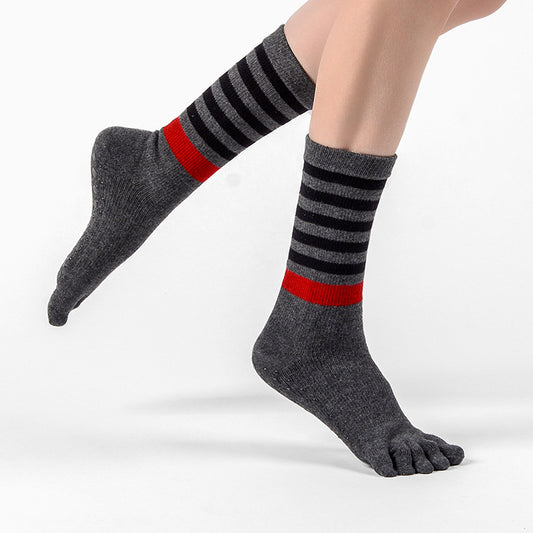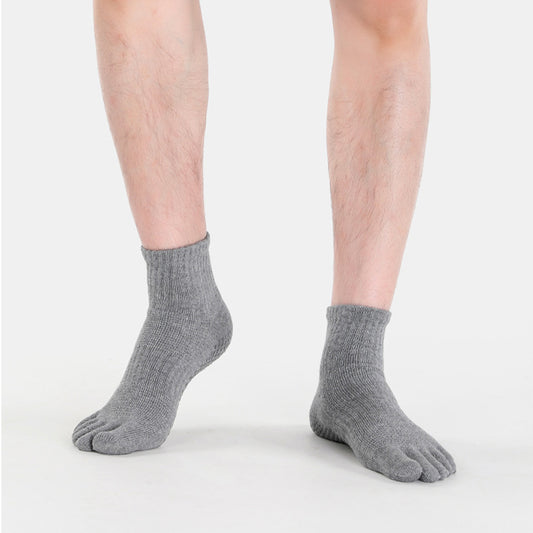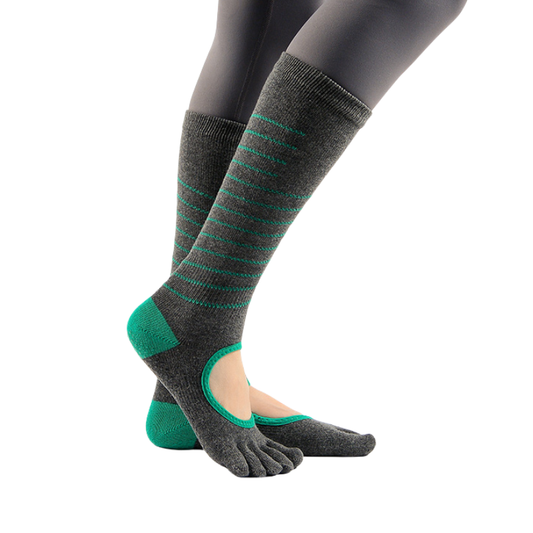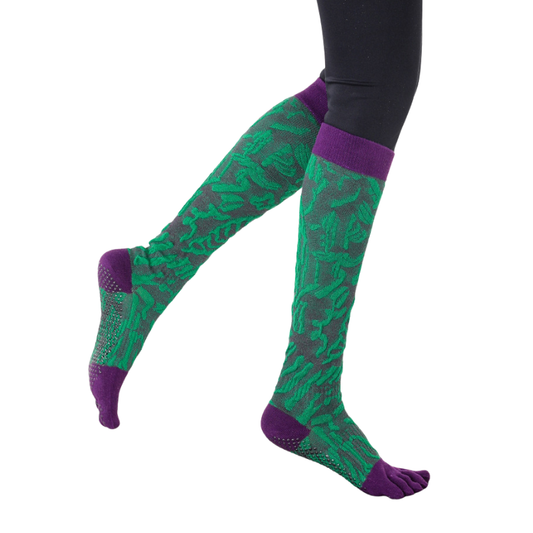Many yoga teachers say “barefoot is best.” And that can be true — being barefoot helps you feel the floor and control your movements.
But after talking to yoga teachers, checking research, and looking at what real people experience in studios, one thing becomes clear:
Yoga socks can solve problems that barefoot practice cannot.
If you practice on slippery floors, shared mats, hot yoga, or if your feet sweat, yoga socks can make your practice safer and more comfortable.
What Are Yoga Socks? (Quick Explanation)
Yoga socks are special socks with grippy silicone dots on the bottom. These dots help your feet stay in place.
They usually include:
-
Grip dots from heel to toe
-
Breathable fabric so feet stay dry
-
Snug arch support
-
Open-toe or closed-toe designs
-
A cleaner barrier between your foot and the floor
They were first used in Pilates and quickly became popular in yoga studios.
Why Yoga Socks Matter: Real Benefits Most People Miss
Benefit 1: Better Grip = Safer Practice
Many yogis slip because of sweat, smooth mats, or tile floors.
Yoga socks add friction, which makes poses like:
-
Downward dog
-
Warrior II
-
Crescent lunge
-
Planks
much easier to hold.
Real Experience Example
A yoga instructor I talked to shared this:
“In my hot yoga classes, at least 30% of beginners slip during their first month. Grip socks instantly fix that.”
Research Example
A 2022 sports science review found that added friction improves balance and reduces falls in stability exercises. (Sports Medicine Journal)
Benefit 2: Much Better Hygiene (Especially in Studios)
Bare feet touch many surfaces — mats, floors, changing areas. Even clean studios can have:
-
Bacteria
-
Sweat
-
Fungal spores
-
Odor-causing germs
Yoga socks add a protective barrier, which is helpful if you’ve ever dealt with foot fungus or cracked skin.
Research Example
A clinical review from 2023 found that ** barefoot activities in warm environments increase fungal infection risk by 2–3×** (Journal of Dermatology).
Benefit 3: Arch Support Helps Balance and Control
Many yoga socks include light arch compression. This helps:
-
Flat feet
-
Weak ankles
-
Overpronation
-
Beginners learning balance
Experience Example
People with flat feet often report:
“Tree pose and warrior feel a lot more stable with grip socks.”
Benefit 4: Perfect for Home Practice — Even Without a Mat
Many people practice yoga at home on:
-
Tile
-
Wooden floors
-
Marble
-
Vinyl
These can be slippery.
Yoga socks let you practice anywhere, even when you don’t have a mat.
Benefit 5: Great for Travel, Pilates, and Studio Classes
Many Pilates and barre studios require grip socks for safety.
Yoga socks work well across:
-
Yoga
-
Pilates reformer
-
Barre
-
Stretching
-
Mobility training
3. Yoga Socks vs Barefoot: Which Is Better?
It depends on the situation.
Barefoot is better for:
-
Strong, experienced yogis
-
Deep grounding poses
-
Slow, controlled practice
Yoga socks are better for:
-
Sweaty feet
-
Beginners
-
Slippery floors
-
Hot yoga
-
Shared studios
-
Home practice
-
People who slip easily
Most people benefit from both options.
Real Problems Yoga Socks Solve (from actual yogis)
Problem 1: “My hands and feet get sweaty and I slide.”
Yoga socks fix this instantly.
Problem 2: “My studio floor feels dirty.”
A pair of socks makes you feel more protected.
Problem 3: “I practice at home on tiles.”
Grip socks give traction on any surface.
Problem 4: “I’m a beginner and I fall in balance poses.”
Socks add simple stability and confidence.
Problem 5: “I hate cold floors.”
Yoga socks keep feet warm but not sweaty.
Open-Toe vs Closed-Toe: Which Should You Pick?
Open-Toe Socks
👍 Better toe movement
👍 More natural barefoot feeling
👍 Great for hot yoga
👎 Less hygiene protection
Closed-Toe Socks
👍 Best for hygiene
👍 More warmth
👍 Good for sharing mats
👎 Feet may feel warmer
Do You Really Need Yoga Socks? (Simple Answer)
If you practice yoga only occasionally and your floor isn’t slippery, you don’t need them.
But for most yogis — especially beginners — yoga socks help with:
-
Grip
-
Safety
-
Hygiene
-
Balance
-
Comfort
They’re a low-cost item that makes practice noticeably better.
FAQ
1. Are yoga socks good for beginners?
Yes. Beginners often slip more, so yoga socks give confidence and better balance.
2. Do yoga socks work without a mat?
Yes — they grip well on wood, tile, and vinyl floors.
3. Are yoga socks good for people with sweaty feet?
Absolutely. They reduce slipping and keep moisture away from the skin.
4. How long do yoga socks last?
Usually 6–12 months, depending on washing and how often you practice.
5. Can I use yoga socks for Pilates or barre?
Yes. Many Pilates studios require grip socks for safety and hygiene.







